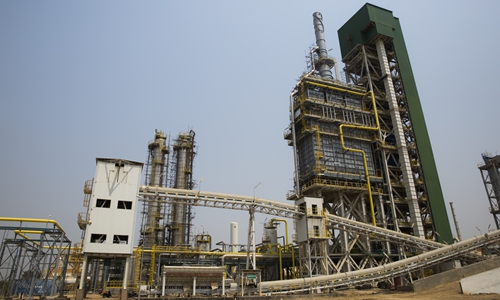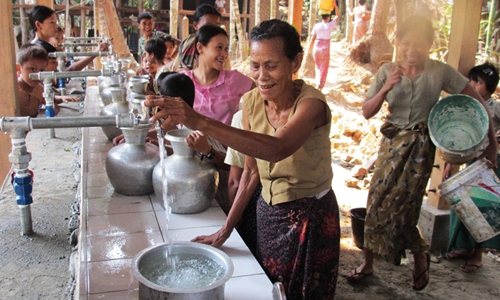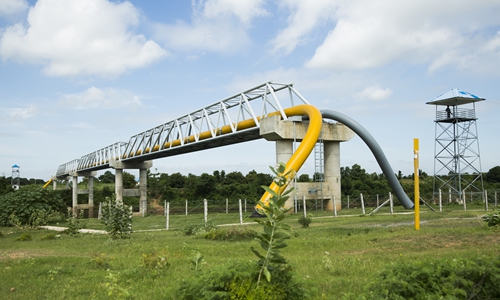HOME >> SOURCE,SPECIAL-COVERAGE
China-Myanmar energy projects going full steam
By Li Xuanmin in Naypyidaw and Zhang Hongpei Source:Global Times Published: 2020/1/16 22:43:40
Bilateral economic cooperation strengthens under key initiatives

A power plant in Mandalay uses natural gas supplied by the China-Myanmar Crude Oil &Gas Pipeline Project to generate electricity. Photo: Courtesy of CNPC
Crude oil and gas projects between China and Myanmar have played a significant role in diversifying China's energy import sources and elevating the economic development of Myanmar as well as the whole Southeast Asian region, high-level executives from China and Myanmar told the Global Times on Thursday.The Myanmar-China Crude Oil & Gas Pipeline Project is operated by two companies - South-East Asia Crude Oil Pipeline Co and South-East Asia Gas Pipeline Co - with Chinese state-owned oil giant CNPC taking a 50.9 percent stake in each.
Between the time that operations began in 2013 and the end of 2019, the 793-kilometer natural gas pipeline transported 24 billion cubic meters (bcm) of gas to China and more than 4 bcm to Myanmar. The crude oil pipeline has transported more than 25 million tons of oil to China since it started operations in 2017, data from the South-East Asia Gas Pipeline Co showed.
Li Zilin, president of the company, told the Global Times on Thursday that the oil and gas projects have helped diversify China's energy imports and greatly boosted local economic development.

Local residents in Myanmar celebrate the installment of water supply system, a project aided by CNPC. Photo: Courtesy of CNPC
"Myanmar has substantial reserves of natural gas offshore, with major fields at sea. Chinese companies' local operation can help improve Myanmar's gas exploration level," Li said, adding that the projects have contributed nearly $500 million for Myanmar society including taxes, wages and dividends.In 2018, China's natural gas imports accounted for 40 percent of its total demand, while 70 percent of crude oil relied on imports. The import volume of natural gas via the pipeline can account for 10 percent of China's total imports by land, according to Li.
"With the surging demand for oil and gas in Southwestern China, it is expected that there can be huge growth in imported energy via the two pipelines," said Li.
Projects between China and Myanmar involving energy, within the framework of the Belt and Road Initiative (BRI) and the China-Myanmar Economic Corridor (CMEC), have promoted bilateral trade and strengthened China-Southeast Asian cooperation in infrastructure. The projects have also had a significant influence on the economic development of the region, said U Kereng Naw Aung, a manager of Myanma Oil and Gas Enterprise, which owns 49.1 percent of the South-East Asia Crude Oil Pipeline Co.
"The pipeline has created jobs and raised local living standards," he said.

A view of China-Myanmar Crude Oil &Gas Pipeline Project in Myanmar in 2019. Photo: Courtesy of CNPC
China-Myanmar bilateral trade reached $13.54 billion in the first nine months of 2019, an increase of 17.9 percent from the same period in 2018, data from China's Ministry of Commerce showed.Apart from crude oil and natural gas, other areas such as solar energy, railways and agricultural products have huge potential that can be tapped by the two countries, according to Li.
The high-speed railway connecting Kunming, capital of Southwest China's Yunnan Province, and Myanmar's Kyaukphyu port serves as an important part of the CMEC.
In October 2018, representatives of both countries signed a memorandum of understanding that kicked off a feasibility study for this project, media reports said.
RELATED ARTICLES:
Posted in: ECONOMY,FOCUS,EXCLUSIVE REPORT